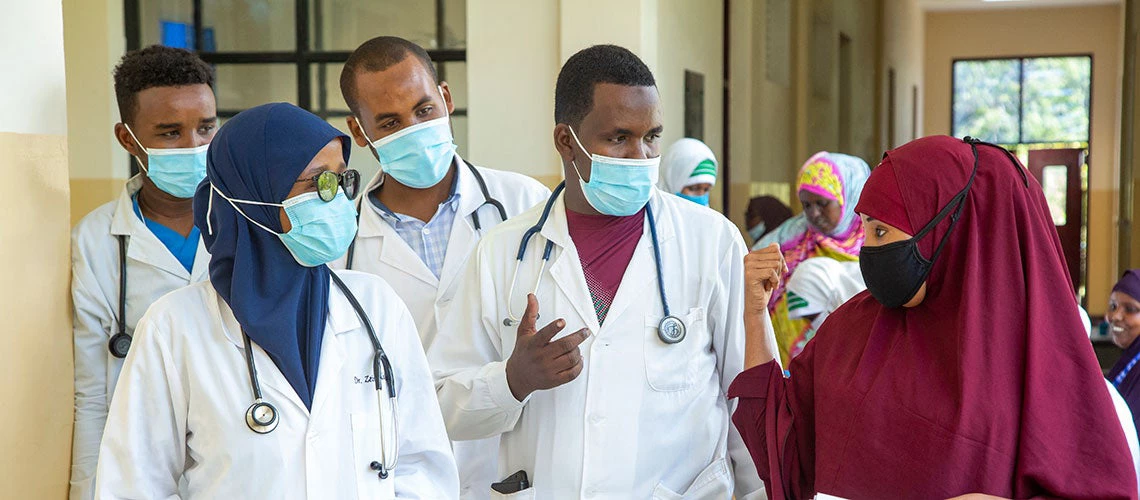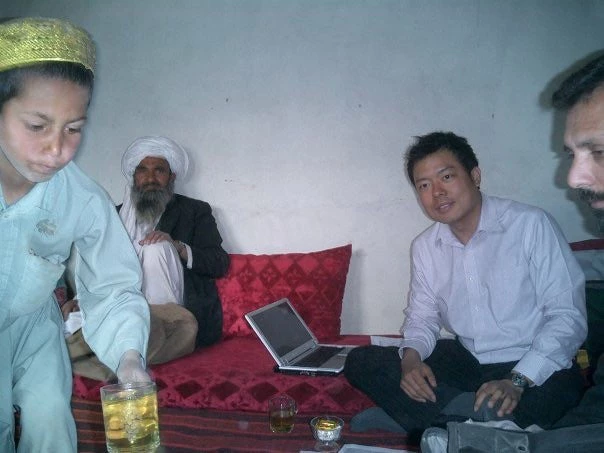 Doctors are walking along a hospital corridor discussing case and wearing face mask.
Doctors are walking along a hospital corridor discussing case and wearing face mask.
The people of Somalia have gone through a very difficult one-and-a-half years. It has been tough for everybody – the poor and the well-to-do, middle-class and technocrats, alike. Even senior government officials confide that the times have been rough. Apart from worrying about health issues, they have also been hesitant to invest due to uncertainty about the COVID-19 pandemic. What’s more, a recent shortage of cooking gas in Mogadishu, for example, increased the price from $18 to $30, over a period of three months.
By any account, life for the ordinary Somali is a huge challenge. But how do we know for sure, when conducting a door-to-door survey to figure out the true picture is not without its own challenges and security risks? To get around survey challenges, the Poverty Group of the World Bank has been conducting High Frequency Phone Surveys on COVID-19 pretty much the same way as elsewhere in the world. This type of quick survey is a great way to know how people’s lives are affected, especially in a place like Somalia, where little data is available.
The World Bank has collaborated with the Somalia National Bureau of Statistics to conduct two rounds of phone surveys already, with the third round under preparation. In January 2021, the survey team reached 1,756 people by phone throughout Somalia. A high rate of cell phone ownership in Somalia, at 74 percent, improves quality of data from a survey of this kind.
The full findings can be found in the brief for the second round of the Somali High Frequency Phone Survey. The job situation has rebounded, compared with the early days of the pandemic (49 percent of the people reported that they had worked over the past seven days, compared with about 39 percent in July 2020). But the situation has not been so good for everyone. About four in five people still reported a drop in income since the start of the pandemic. The most troubling finding has been on hunger. It is very difficult to make sense of the fact that 37 percent of the adult population goes without food for an entire day!
The situation seems to have worsened not just because of COVID-19, but also as a result of extreme climate events, like droughts, floods, and desert locust infestation. About 64 percent of people in the survey sample said that they were affected by one natural disaster or the other. You can’t help but wonder how strong someone must be, to survive so many disasters alongside COVID-19. The survey reveals the resilience of the Somali. Regardless, they need help.
The one big, bright source of hope has been vaccination. What Somali people have told us is most encouraging: As many as 91 percent said YES to getting a jab of a free COVID-19 vaccine. The receptive attitude toward vaccination is similar across all genders, population types and areas. But the majority do not want to pay for the vaccine. This is understandable, given the dire economic situation.
Figure: Share of population willing to get vaccinated

This kind of data insight is hugely useful for interventions that could ease the situation the country has been through for the past 18 months. We now know, without doubt, that the Somali are not hesitant about getting vaccinated, unlike some segments of populations in rich countries. Yet they cannot afford the vaccines. Accordingly, a new project worth $45 million has been prepared and approved by the World Bank to support Somalia’s efforts to expand vaccination. The proceeds from the project will be used to procure and deploy COVID-19 vaccines and build the government’s capacity to manage the pandemic.
What is next for the survey?
Our team is conducting the third round of the survey. We are working with the World Bank health team to find out whether people have been vaccinated. Concurrently, to address the dire hunger and poverty situation, we are working with the World Bank Social Protection team that is running the Baxnaano Programme – a cash grant programme for vulnerable people and people who lost their livelihoods during the locust invasion. In the coming months, we expect to continue conducting phone surveys in concert with the Somali authorities. We are open to new ideas. Let us know, in the comment section below, what other areas of data that we should collect in the fourth round. And if you are interested in knowing how the Somali situation compares with what is happening in other countries, you may want to check out the COVID-19 Household Monitoring Dashboard.


Join the Conversation